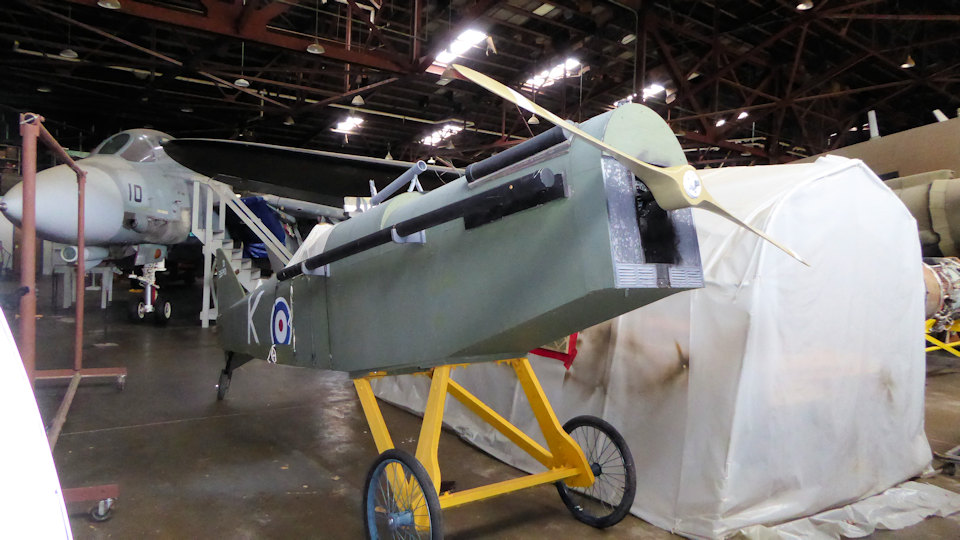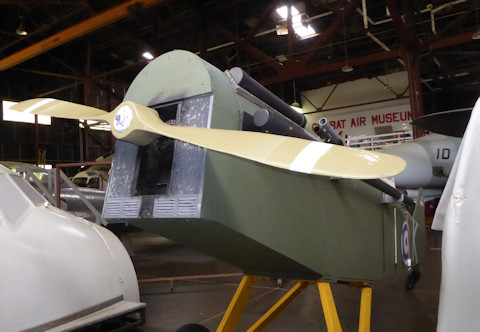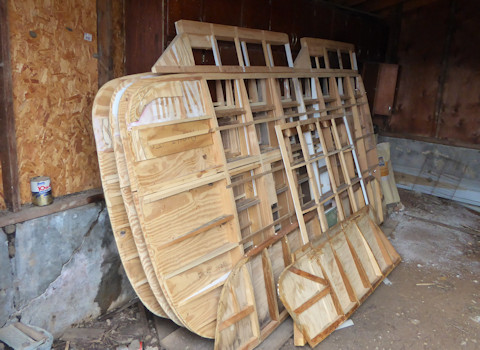The S.E.5 (Scout Experimental 5) went into service over the Western Front in early April 1917 with the RFC 56th Squadron.
According to acepilots.com "Flown by the greatest Allied aces during the First World War - such as Billy Bishop, James McCudden and Edward Mannock, the Royal Aircraft Factory S.E.5 (Scout Experimental #5) was without doubt the most successful plane produced by this firm. A single-seat biplane with dihedral wings, H.P. Folland's design team focused on making it easy to fly. This characteristic enabled the Royal Flying Corps to entrust the plane to relatively inexperienced pilots. Thanks to the efforts of the engineers, this aircraft was as almost as manoeuverable as its contemporary, the Sopwith Camel, but was noticeably faster and quieter.
| Technical Notes: |
|
| Crew |
One |
| Type |
Biplane Fighter Aircraft |
| Length |
21 ft (6.4 m) Hispano-Suiza engine
20 ft 11 inches (6.38 m) Viper engine |
| Wingspan |
26 ft 7 inches (8.11 m) |
| Height |
9 ft 6 inches (2.89 m) |
| Wing Area |
244 sq. ft (22.67 sq.m) |
| Empty Weight |
1,410 lbs (639 kg) |
| Loaded Weight |
2,048 lbs (929 kg) |
| Powerplant |
1 x Hispano-Suiza 8 or Wolsey W.4A Viper watercooled V8 engine 200hp (150 kW) |
| Max Speed |
121 mph/15,000 ft (195 km/h) |
| Range |
300 miles (483 km) |
| Service Ceiling |
17,000 ft (5,185 m) |
| Armament |
1 x .303 (7.7 mm) forward firing Vickers Machine Gun (plus interrupter gear)
1 x .303 (7.7 mm) Lewis Machine Gun on Foster mounting (on upper wing)
4 x 25 lb (11 kg) Cooper bombs |
| |
|
| Number manufactured |
5,225 |
| Production Dates |
Sept 1916 to Oct 1918 |




